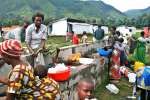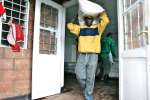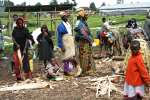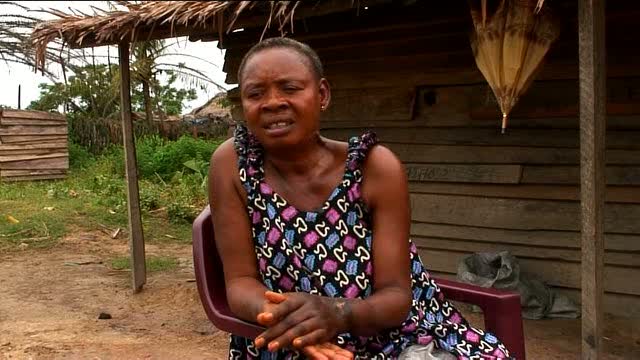Rwandan women lead the way home from Brazzaville
News Stories, 25 August 2005

BRAZZAVILLE, Republic of the Congo, August 25 (UNHCR) – For over a decade, Faustine thought she was all alone in the world, having lost her whole family in Rwanda's ethnic conflict in 1994. Imagine her shock when she found them in their home village 11 years later, alive and well.
"All along I thought my parents, sisters and brothers were dead," she said. "When I saw them, I couldn't believe my eyes. I was shocked beyond words at the sight of my mother, her arms flying open as she stumbled forward to embrace me."
Faustine was among a group of 15 Rwandan refugees in the Republic of the Congo (RoC) who recently went on a go-and-see visit to Rwanda to see for themselves the living conditions in their homeland. They returned to Brazzaville after the two-week trip sponsored by the UN refugee agency, and shared their observations with their compatriots in exile.
"Rwanda is not what some people think it is," said 30-year-old Faustine. "Everywhere we went in Kigali, there were good schools, good roads and health centres. The streets are the opposite of what we saw in 1994. There is order and people walk about doing business freely."
She conceded that conditions in her home area of Kibungo in the east were less developed but were definitely improving.
Immaculée, 24, also went on the recent visit. "I did not want to return to RoC after meeting my parents in Kibungo," she said, adding that she was overjoyed to see her parents after 10 years apart, but devastated to discover that the family home had been destroyed in the clashes.
Both Immaculée and Faustine – who share similar experiences in exile but only met during the go-and-see visit – ended the trip with a determination to return home for good, despite the atrocities they faced during the civil conflict.
At the height of the 1994 genocide that left an estimated 800,000 Rwandans dead, both women fled Kigali to Gisenyi town, then crossed the border into Goma in eastern Democratic Republic of the Congo (DRC). In 1996, they were caught in the DRC conflict and were pushed further inland, finding shelter in the villages of Tingitingi and Walikale.
As the fighting raged on, it forced Immaculée, who was then 16, to cross the vast interior of the DRC and brave the Equateur rainforest in the north-west. Her aunt died of exhaustion along the way, but the endless fighting denied Immaculée the opportunity to mourn or give her aunt a decent and customary burial.
Immaculée eventually crossed the Congo River into Loukolela in the RoC. Faustine also arrived in Nzondu, some 30 km from Loukolela. Both women arrived in the RoC after months of travelling on foot or by boat.
In Brazzaville, they kept alive their hopes of returning home through contact with UNHCR. Faustine has a child aged nine, while Immaculée has two children aged six and two. With the support of UNHCR and the RoC government, the two older children have been able to attend school in Brazzaville. Both women survive on small trading, while Immaculée also supplements her income by sewing.
Since returning from the go-and-see visit to Rwanda, Faustine and Immaculée have a new mission – spearheading a campaign to educate fellow exiles on the improved conditions back home. They hope that by telling their story of Rwanda as they have seen it recently, they can win the hearts and minds of those who are unsure of their return options.
More than 130 Rwandan refugees in the Republic of the Congo have been airlifted home with UNHCR assistance since the two governments signed the tripartite agreement in June 2003. Over 5,000 Rwandan refugees remain in cities and towns like Brazzaville, Loukolela, Ouesso and Impfondo.
By David Nthengwe


































































